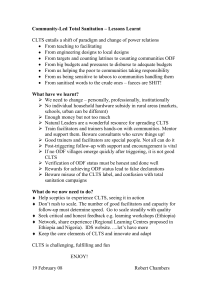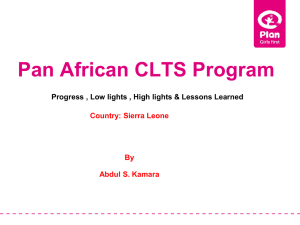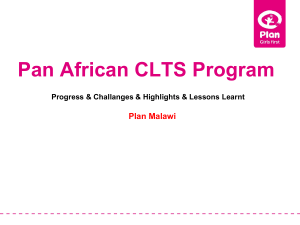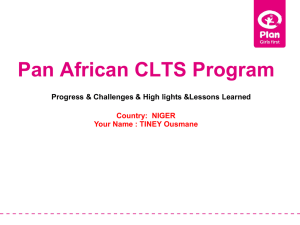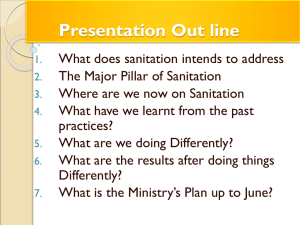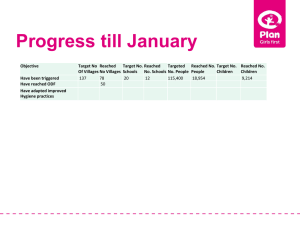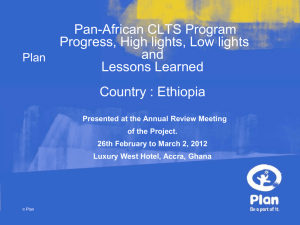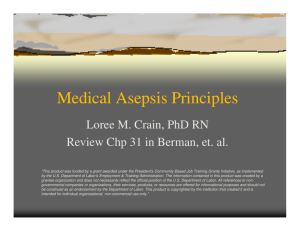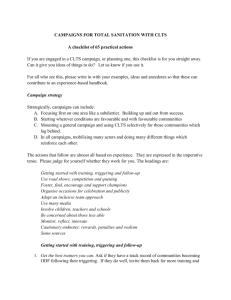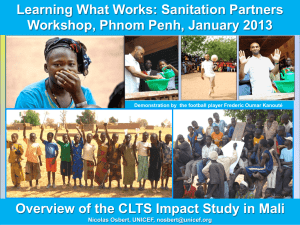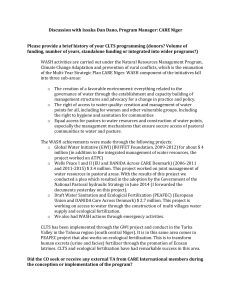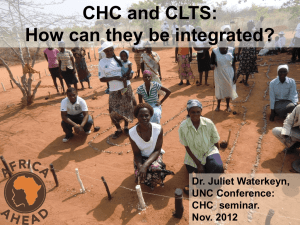Zambia - Community-Led Total Sanitation
advertisement
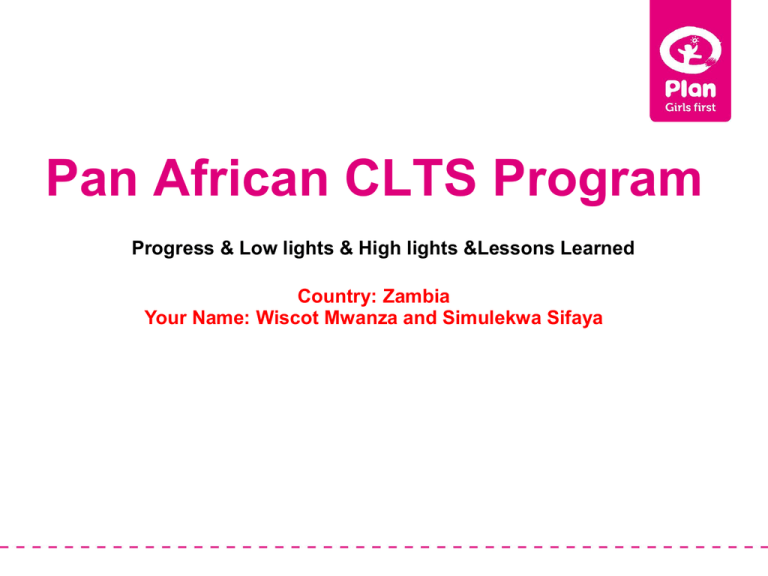
Pan African CLTS Program Progress & Low lights & High lights &Lessons Learned Country: Zambia Your Name: Wiscot Mwanza and Simulekwa Sifaya Progress till January Objective: Increase sanitation coverage through the CLTS approach Target No Reached No Target No. Reached Targeted Reached No. Target No. Of Villages Villages Schools No. Schools No. People People Children Reached No. Children Have been triggered Have reached ODF Have adapted improved Hygiene practices 100 19,794 114 71 10 03 03 120,000 49, 484 60,000 • Are communities empowered to develop and maintain their own WASH Systems? • All triggered communities have been empowered to develop and maintain their own WASH systems. This has been done through capacity building and exposure visits Has the National government accepted the CLTS approach and are they also implementing this? Is there a budget available? • The Zambian government has accepted the CLTS as an approach to accelerate sanitation coverage in the national sanitation strategy. • Ministry of Local Government, Housing, Early Education and Environmental Protection are a lead government agency in the implementation of WATSAN activities. Is there a budget available? • There is a budget in place for the scaling up of CLTS in Zambia. During the year 2011, provincial and district trainings for CLTS facilitators were conducted, e.g. 2,000 CLTS facilitators will be trained by government support countrywide. Low Lights • Please describe the 4 main challenges that the program faced so far. 1. CLTS Volunteer motivation 2. Collapsing of latrines in some areas 3. Limited community participation in some areas in the implementation of School Led Total Sanitation 4. Motivation of villages that have attained ODF to remain ODF Please explain during the meeting if you were able to overcome these challenges. If, so explain how you overcame them 1. CLTS volunteer motivation i. Some CLTS volunteers were incorporated in the CLTS Exchange visit to Choma district ii. Case study on one of the head persons who appeared in the 2010 Pan-African CLTS Trigger Magazine. The magazine was shared with others. How challenges were overcame 2. Collapsing of latrines in some areas • Lining of pits using bamboo baskets, woven sticks, and concrete rings, etc. How challenges were overcome 3. Limited community participation in some areas in the implementation of School Led Total Sanitation • Holding community meetings. • Involvement of the Department of Education, i.e. DEBS’ office. • Involvement of the EHTs in SLTS How challenges were overcome 4. Motivation of villages that have attained ODF to remain ODF • Nothing, though there are plans by government to start awarding villages that have attained ODF to remain ODF High Lights • Give three examples of things that you are really proud of / main lessons learned of the CLTS program so far. i. There is community ownership of the program. ii. Involvement of different players/cadres at national, district, sub-district and village level which brings about different expertise required for the program iii. Involvement of children Lessons Learned • What are the three main lessons that you have learned from the CLTS program so far? i. Innovation in latrine by communities which can be harnessed. ii. You achieve more when community based CLTS facilitators are trained and used to trigger and follow up villages. iii. Exchange visits are an effective tool for learning. Please explain how you have incorporated these in the CLTS program I. Innovative community members are being used to promote basket lined latrines at a fee. II. Chiefs, village headpersons, natural leaders, EHTs and including other extension staff are involved in facilitation of CLTS/SLTS. III. Joint monitoring visits at sub-district level and exchange visits between communities and to other districts were conducted. Picture • Include some nice pictures of toilets build in the project area.
